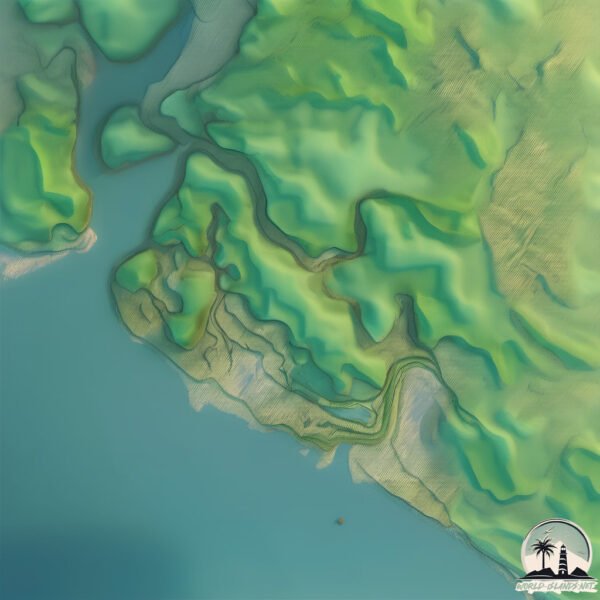Welcome to Île Quito , a Tropical island in the North Atlantic Ocean, part of the majestic Atlantic Ocean. This guide offers a comprehensive overview of what makes Île Quito unique – from its geography and climate to its population, infrastructure, and beyond. Dive into the details:
Geography and size of Île Quito
Size: 83 km²Coastline: 67.5 kmOcean: Atlantic OceanSea: North Atlantic OceanContinent: Africa
Île Quito is a Medium Island spanning 83 km² with a coastline of 68 km.
Archipel: –
Tectonic Plate: North Andes – Located in South America, covering Colombia, Ecuador, and part of Venezuela, it is known for its seismic activity due to interactions with the South American Plate.
The geographic heart of the island is pinpointed at these coordinates:
Climate and weather of Île Quito
Climate Zone: TropicalClimate Details: Tropical Monsoon ClimateTemperature: Hot
Climate Characteristics: Characterized by heavy rainfall, high humidity, and uniformly high temperatures, but with a distinct short dry season. It features a seasonal reversal of prevailing wind directions.
Topography and nature of Île Quito
Timezone: UTC±00:00Timezone places: Europe/LisbonMax. Elevation: 23 m Mean Elevation: 7 mVegetation: Mangrove ForestTree Coverage: 51%
The mean elevation is 7 m. The highest elevation on the island reaches approximately 23 meters above sea level. The island is characterized by Plains: Flat, low-lying lands characterized by a maximum elevation of up to 200 meters. On islands, plains are typically coastal lowlands or central flat areas.
Dominating Vegetation: Mangrove Forest
Vegetation: 11 vegetation zones – Exceptionally Diverse Island
Infrastructure and Travelling to Île Quito
Does the island have a public airport? no .
Does the island have a major port? no .
The mean population of Île Quito is 104 per km². Île Quito is Moderately Inhabited. The island belongs to Guinea .
Continuing your journey, Île Marara is the next notable island, situated merely km away.
15 Things You Should Know Before You Go to the Galapagos Islands
Learn our top tips for one of our favorite travel destinations, the Galapagos Islands! You can also check out our other Galapagos ...
15 Things You Should Know Before You Go to the Galapagos Islands
Learn our top tips for one of our favorite travel destinations, the ...
Learn our top tips for one of our favorite travel destinations, the Galapagos Islands! You can also check out our other Galapagos ...
How to Spend 5 Days in GALAPAGOS Islands Ecuador
Welcome to our latest adventure video "How to Spend 5 Days in ...
Welcome to our latest adventure video "How to Spend 5 Days in GALAPAGOS Islands Ecuador." In this video, we're taking you on ...
The Most Mind-Blowing Islands on Earth | Galápagos
What do you imagine when you hear the word "Galápagos"? If you're ...
What do you imagine when you hear the word "Galápagos"? If you're interested in booking this tour (or one similar), click this link ...
Guinea is classified as Least developed region: Countries that exhibit the lowest indicators of socioeconomic development, with the lowest Human Development Index ratings. The level of income is Low income.
News – Latest Updates and Headlines from Île Quito
Stay informed with the most recent news and important headlines from Île Quito. Here’s a roundup of the latest developments.
Loading...
Please note: The data used here has been primarily extracted from satellite readings. Deviations from exact values may occur, particularly regarding the height of elevations and population density. Land area and coastline measurements refer to average values at mean high tide.

